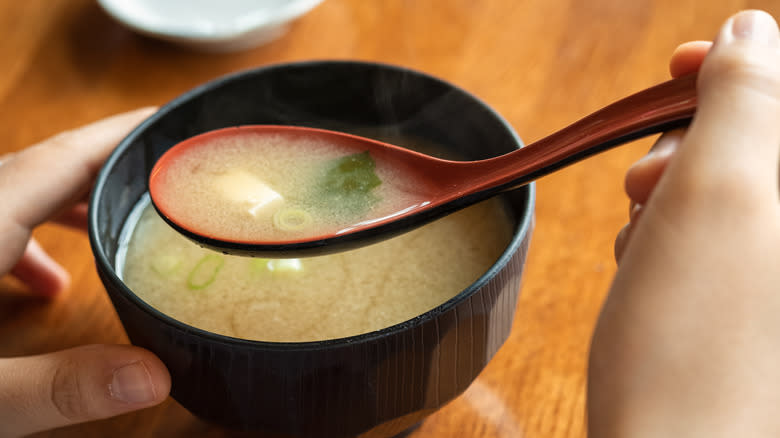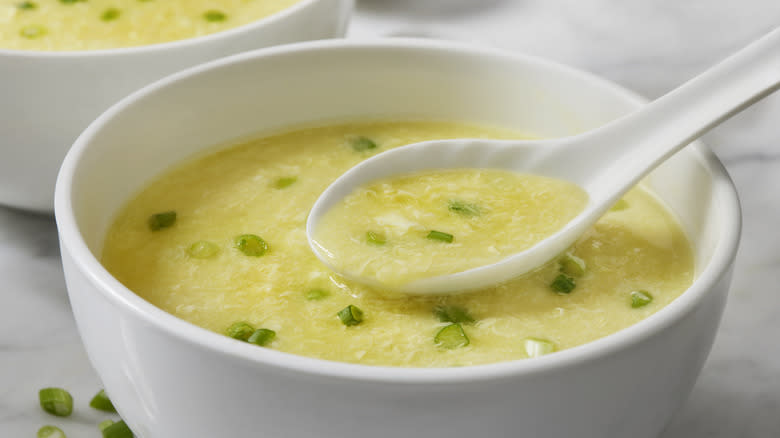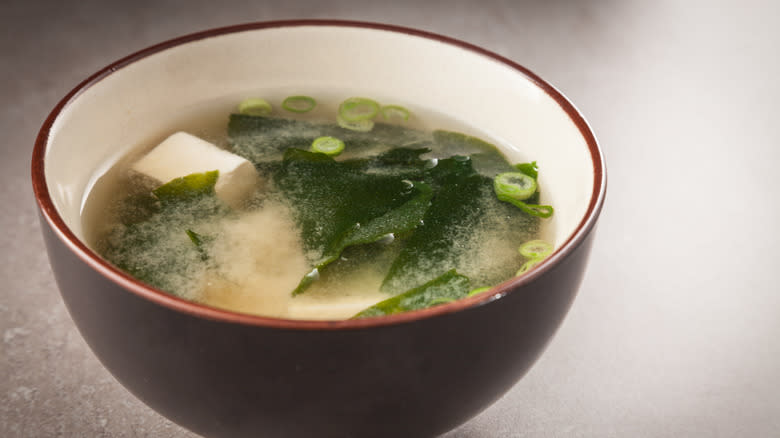What's The Difference Between Egg Drop Soup And Miso Soup?

Asian cuisines certainly feature a brilliant kaleidoscope of dishes and flavors. This isn't surprising when you consider Asia is by far the world's largest and most populous continent, so of course, it will be home to tons of different dishes and flavor profiles. This isn't just true from culture to culture, but even within cultures themselves; China, in particular, has a massive melding of different cuisines, with far more regional variety than most Americans might think.
But one thing most Asian cuisines (at least East and Southeast Asian ones) are known for is soup. From pho and tom kha to ramen and hot and sour soup, each East Asian cuisine has at least one signature soup. And the two Asian soups with which most Americans are likely familiar must be egg drop and miso.
So, what's the difference between egg drop and miso soup? Everything. It's a little surprising that anyone could confuse these two soups because they're pretty much nothing alike. The flavor profiles are entirely different, and they come from different countries.
Read more: 11 Of The Best Cooking Tips From Bobby Flay
Egg Drop Soup Is Chinese, Miso Soup Is Japanese

Egg drop soup (or at least its progenitors) originated in China among Imperial Cantonese courts. Miso soup, meanwhile, comes from Japan, likely rising to prominence during the Kamakura period of 1185-1330 (even if miso itself is probably originally from China). These soups taste radically different, which is unsurprising since there is a vast difference between Japanese and Chinese cuisines, from the standpoint of flavor profiles, ingredients, and even cooking methods.
Those cooking methods are essential to distinguish here. Egg drop soup's primary base is a flavorful chicken broth into which a thin stream of beaten eggs is poured. In terms of ingredients, it's a simple soup -- but the cooking technique itself is far more complicated. The eggs have to be poured in a thin stream at just the right speed to form the soup's characteristic long, continuous ribbons, as opposed to large egg clumps (scrambled egg soup, anyone?) or small egg flakes. Ultimately, it winds up tasting like chicken and eggs, which makes sense since those are the soup's two primary ingredients.
Miso Soup Shares Almost No Ingredients With Egg Drop Soup

Miso soup, meanwhile, has radically different ingredients. It's typically made using dashi, a soup base that combines kombu (a type of kelp) and bonito flakes. This base is then combined with various types of miso paste -- a mixture of fermented soybeans. From there, other ingredients are usually added; these vary wildly by region in Japan, but in America, the most common ones you will see are seaweed, tofu, and green onions. That last ingredient is the only possible point of overlap between egg drop soup and miso; though green onions aren't necessarily common in egg drop, you do see them occasionally. Otherwise, the two soups share pretty much nothing in common.
It's important not to get these soups mixed up. They're so different that if you confuse one for the other, you probably won't be enjoying what you had in mind. What you should do, though, is eat plenty of each of them since they're both absolutely delicious.
Read the original article on Daily Meal.

